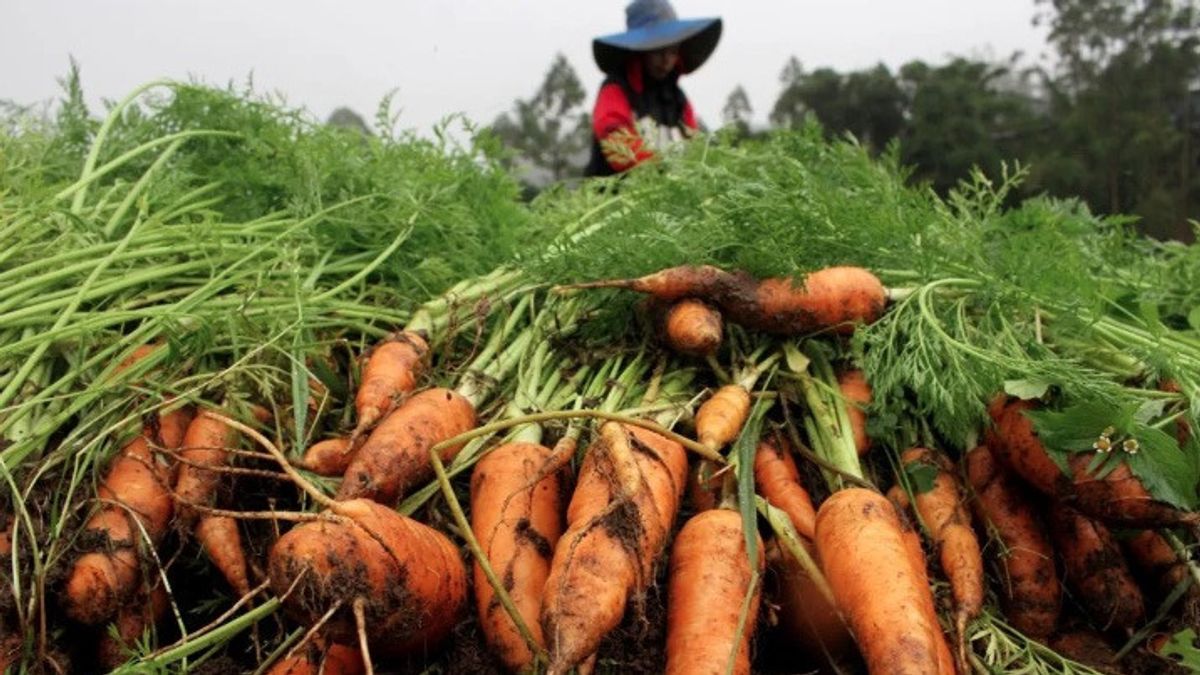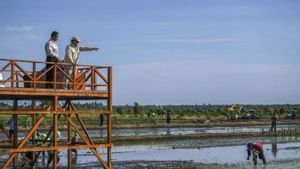JAKARTA A heartbreaking sight spread through a video that went viral on social media. The video shows farmers raging and pulling out their carrots. They were disappointed that the price of carrots dropped drastically in the past few months.
It is not known for sure where the video was taken. However, one of the farmers in Pasurenan Village, Batur District, Banjarnegara, Vandri Dwi, admitted that he experienced the same thing, namely the selling price of carrots that was not proportional to the cost of production.
If usually the price of carrots can reach Rp. 5,000 per kilogram, now it is only valued at Rp. 300 per kg. The price of carrots that drop drastically makes farmers forced not to harvest their crops, because the harvest is not comparable to the operational costs that need to be spent.
This price drop is said to have occurred in the last two months. Because the selling price is not worth the production cost, many farmers finally give up. Letting carrots ready to harvest rot on land or use carrots as animal feed. But there are also those who distribute the carrots for free to residents.
The high import of carrots from China is said to be the cause of the decline in local carrots prices. Is that true?
Carrots are not the only type of vegetable that makes farmers scream because of the falling price. Other vegetables such as cabbage have also decreased. The brush purchased directly from the land is only priced at Rp. 200 per kg, far below the usual price which is usually priced at Rp. 9,000 per kg. Likewise, the packcoy from Rp. 2,500 to Rp. 800 per kg, while the white palm oil becomes Rp. 800 per kg from the previous Rp. 3,000 per kg.
The decline in vegetable prices, especially carrots, was also felt by farmers in other areas. In August, the price of carrots in Karo fell to Rp1,000 per kg. This situation makes farmers frustrated because of selling prices that cannot cover operational costs.
Farmers of North Sumatra (North Sumatra) Sudarto Sitepu said there was a possibility that the price of carrots had fallen due to Indonesia being flooded with imported carrots from China and Vietnam which made local farmers eliminated and lost competitive.
Some say the quality of these imported carrots is much better than local carrots. But the taste, is much better for local carrots. But now most consumers are hunting for outside products, so local products lose competitiveness," said Sudarto.
Farmers who are restless due to the drop in carrots prices have made those who are members of the Wortel Karo Farmers Association visit the Karo Regent's official residence to question the local government's attitude. Not only that, they even held a meeting with Deputy III of the Presidential Staff Office, Ministry of Trade, and the Directorate General of Holticulture of the Ministry of Agriculture.
SEE ALSO:
From the results of the meeting, it was known that there were 2.35 tons of imports from China to Tanjung Perak Port. However, according to the Ministry of Trade, only 0.3 percent of carrots imports from national production are 668 thousand tons a year.
According to data from the Central Statistics Agency (BPS), Indonesia's carrots production will reach 720,090 tons, then in 2022, carrots production will increase to 737,965 tons. But last year, carrots production decreased to 668,046 tons.
On the other hand, carrots imports also continue to increase. If in 2017 there were only 34.68 tons of carrots imported, in 2020 Indonesia imported 203.19 tons and the figure continued to soar to 255.58 tons in 2021.
Despite owning a large area of land, Indonesia still relies on importing vegetables to meet domestic needs. BPS noted that since 2018 Indonesia has routinely imported vegetables from China. Finally, in 2023, the Bamboo Curtain Country became a supplier of vegetable products to Indonesia, which reached 641,132 tons.
Apart from China, Indonesia also imports vegetables from other countries such as Myanmar, New Zealand, Australia, India, the United States, and even Ethiopia, one of the poorest countries in the world.
agricultural observer Khudori once discussed Indonesia's dependence on vegetable and fruit imports from China. According to him, this shows that the performance of holticulture production in this country is not good.
"There are no number of imports between Indonesia and import duties, and import duties have been very low after the trade bilateral agreement (The ASEAN Free Trade Area/AFTA) with China in 2010," said Khudori.
Furthermore, he highlighted the trade balance in the agricultural and livestock sectors which continues to increase imports. The government, according to Khudori, argued that the imports were used to fill the void in agricultural production and domestic livestock.
"In terms of the area of our per capita agricultural land with China, Thailand, Vietnam and India are far behind. But we are better than Malaysia and the Philippines," he explained.
However, the area of agricultural and livestock land is certainly an indicator of how much a country can afford to meet domestic food needs.
"The narrower the land area per capita, the smaller the production of food and livestock that can be produced," said Khudori.
For information, currently Indonesia's food area is only 0.026 hectares (ha) or 260 square meters per capita, so it is the narrowest in the world. In fact, the population of Indonesia is the fourth most populous in the world.
Compared to the United States, which has the third largest population in the world, owns a food area of 0.511 ha per capita, while India, which has the largest population in the world, owns a food area of 0.131 ha per capita.
The English, Chinese, Japanese, Arabic, and French versions are automatically generated by the AI. So there may still be inaccuracies in translating, please always see Indonesian as our main language. (system supported by DigitalSiber.id)














